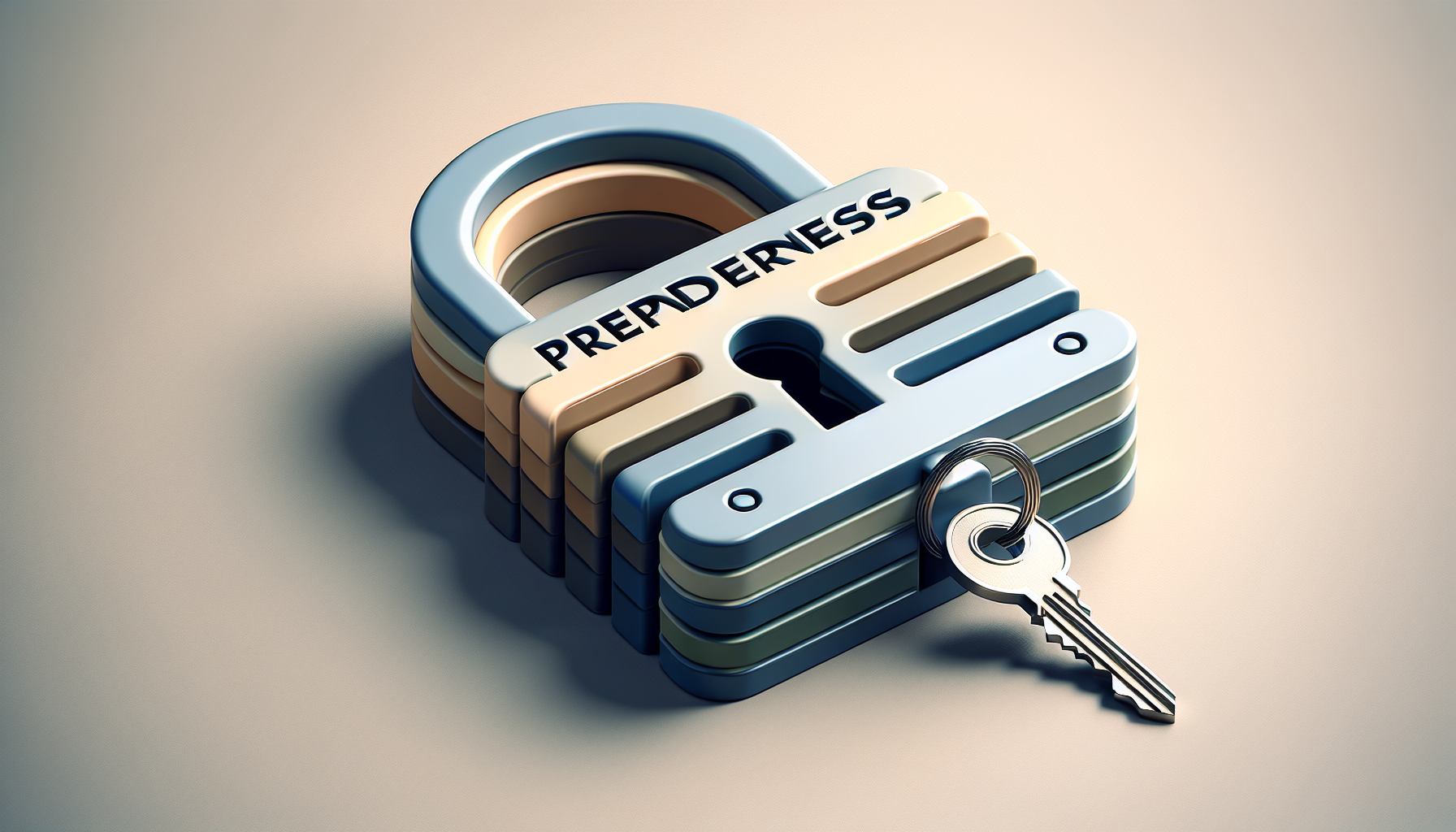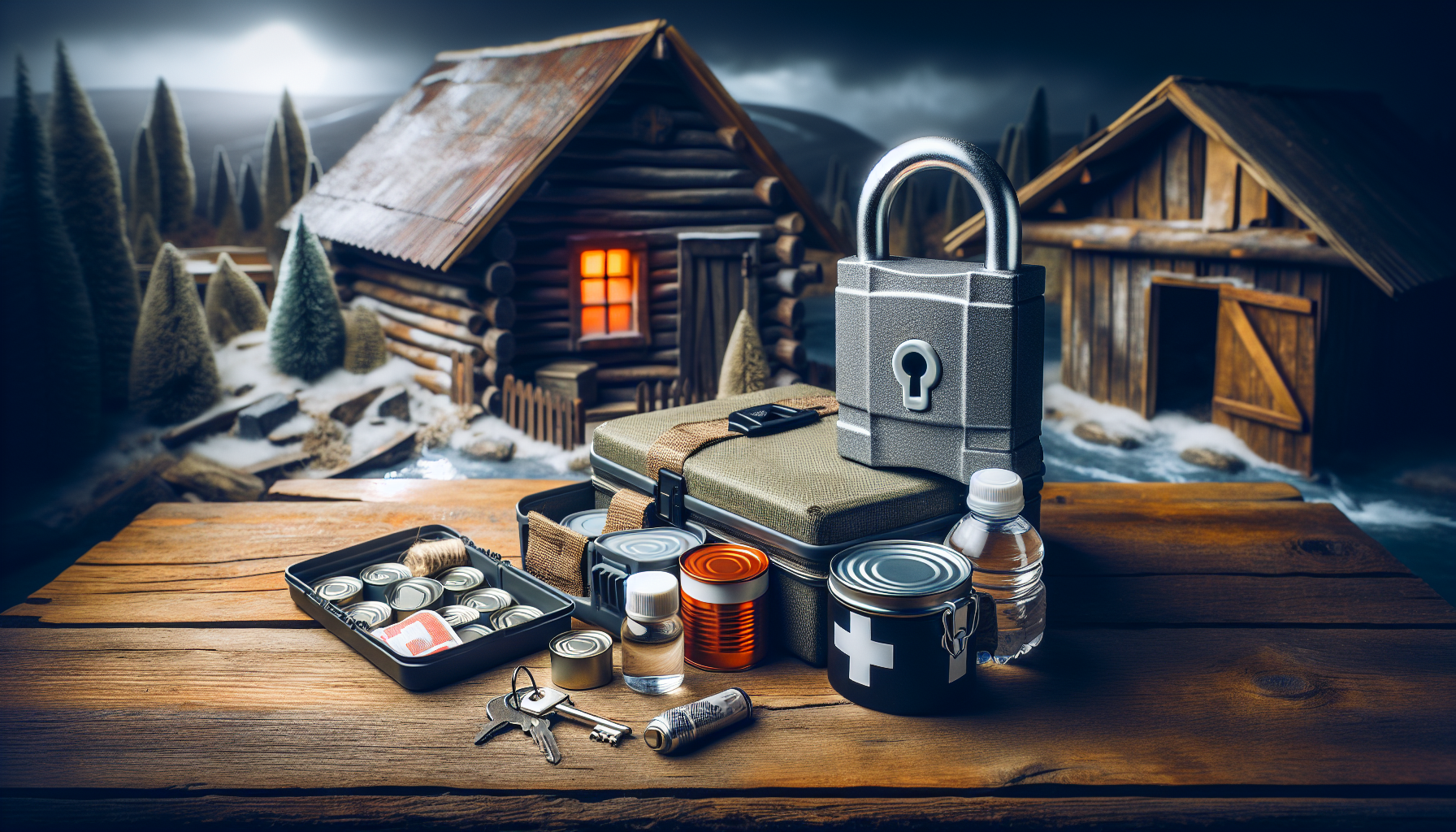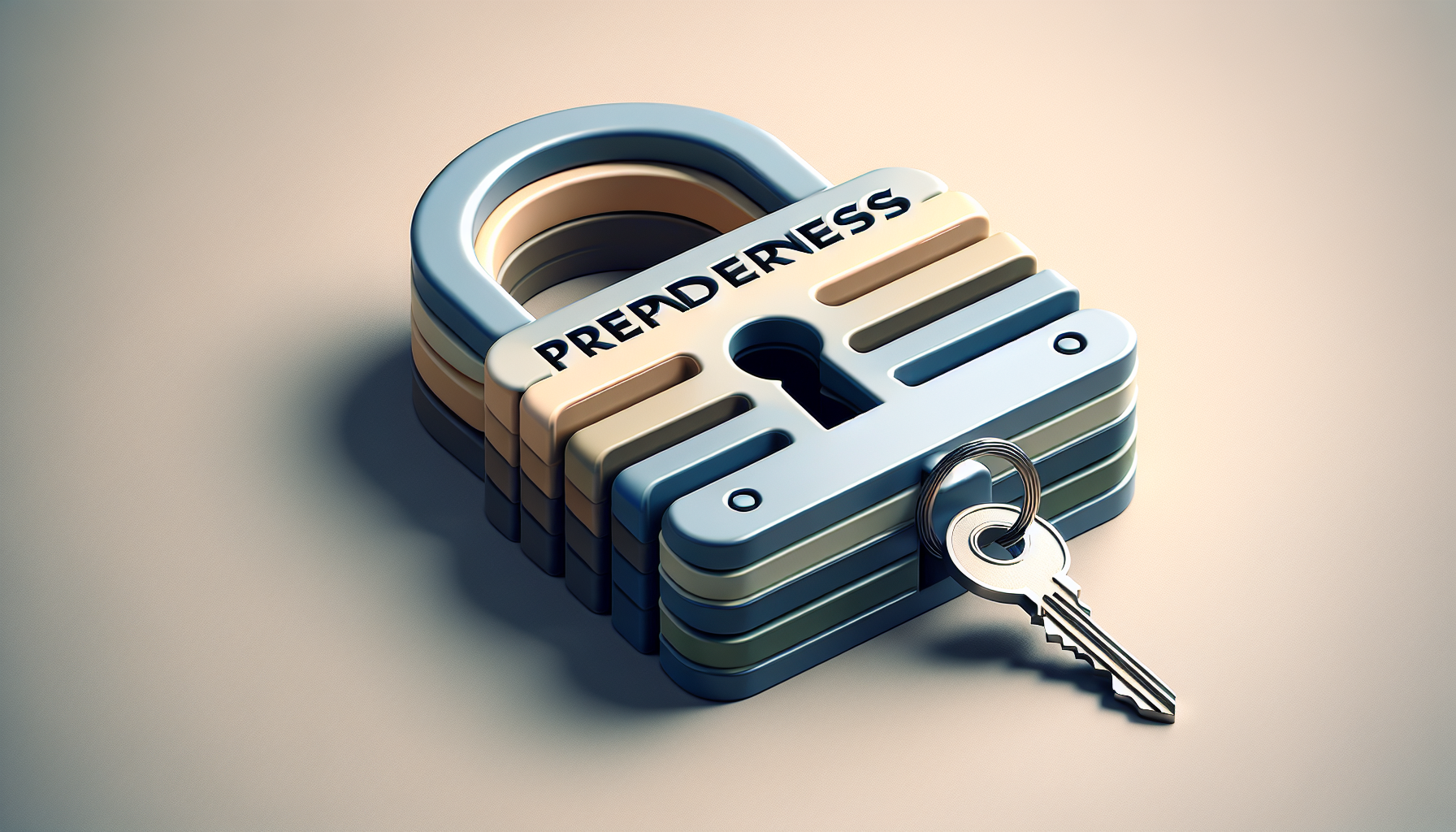So, you’re thinking about joining the prepping community, but you’re not quite sure where to start? Well, look no further! In this article, we’ll explore the crucial first step in prepping that sets the foundation for your preparedness journey. Whether you’re preparing for natural disasters, societal breakdowns, or simply want to be self-reliant, understanding this initial step will help you build a solid groundwork for your future readiness. So, let’s get started and find out exactly what the first step in prepping is all about.
Creating a Plan
When it comes to prepping, the first step is creating a comprehensive plan. This plan will serve as your roadmap and guide you through the process of becoming prepared for emergencies or crises. By taking the time to create a plan, you can ensure that you are focusing on the most important aspects of prepping and addressing your specific needs and priorities.
Assessing Your Goals and Priorities
The first step in creating a plan is assessing your goals and priorities. Take some time to think about what you are preparing for and what outcomes you hope to achieve. Are you preparing for natural disasters, economic downturns, or other emergencies? Once you have identified your goals, you can prioritize them based on what is most important to you and your family.
Identifying Your Resources and Limitations
After assessing your goals and priorities, it’s important to identify your resources and limitations. Take stock of what you already have on hand that can be used in emergencies, such as food, water, and medical supplies. Additionally, consider your financial resources and any limitations that may impact your ability to fully prepare, such as budget constraints or physical limitations.
Setting Realistic Expectations
Setting realistic expectations is crucial when creating a plan. Understand that prepping is a journey, and it may take time to fully achieve your desired level of preparedness. Set achievable goals and break them down into manageable tasks. By setting realistic expectations, you can avoid feeling overwhelmed and stay motivated throughout the process.
Starting a Stockpile
One of the key aspects of prepping is creating a stockpile of essential items. This stockpile will serve as a backup supply of necessary resources in times of need. To start a stockpile, there are a few important steps to follow.
Determining Essential Items
The first step in starting a stockpile is determining which items are essential for your specific needs. Consider basic necessities such as food, water, first aid supplies, hygiene products, and household items. Make a list of these essential items to serve as a guide when building your stockpile.
Calculating Quantity and Duration
Once you have identified the essential items, it’s important to calculate the quantity and duration that your stockpile should cover. Consider factors such as the number of people in your household, any dietary restrictions or allergies, and the length of time you want your stockpile to sustain you. This will help you determine how much of each item you should aim to stockpile.
Building a Storage System
Building a proper storage system is essential for maintaining a well-organized and accessible stockpile. Consider investing in sturdy shelves, storage containers, and labeling systems to keep your stockpile inventory in order. Make sure to store items in a cool, dry, and secure location to ensure their longevity.

Securing a Water Supply
Water is a basic necessity for survival, so ensuring a reliable water supply is crucial in any emergency or crisis situation. Here are some steps to consider when securing your water supply.
Understanding Water Needs
The first step in securing a water supply is understanding your water needs. The average person requires about one gallon of water per day for drinking and hygiene. Take into account the number of people in your household and the number of days you want to be prepared for. This will help you determine how much water you should have stored.
Exploring Different Water Sources
In addition to storing water, it’s important to explore different water sources that may be available to you in an emergency. This can include sources such as rivers, lakes, rainwater, or even melting snow. Research and consider the feasibility and safety of each water source before relying on them.
Implementing Water Purification Methods
To ensure the safety of your water supply, it’s important to implement water purification methods. This can include using water filters, boiling water, or using water purification tablets. Make sure to educate yourself on the proper techniques for water purification and have the necessary supplies on hand.
Developing a First Aid Kit
A first aid kit is an essential component of any preparedness plan. It allows you to address minor injuries and illnesses and can provide temporary relief until professional medical help is available. Here’s how you can develop a comprehensive first aid kit.
Assessing Medical Needs
The first step in developing a first aid kit is assessing your medical needs. Consider any existing medical conditions, allergies, or specific needs of individuals in your household. This will help you determine the necessary supplies and medications to include in your kit.
Gathering Basic First Aid Supplies
Stock your first aid kit with the basic supplies needed to address common injuries and illnesses. This can include adhesive bandages, gauze, antiseptic wipes, tweezers, scissors, and disposable gloves. Make sure to regularly check and replenish your supplies to keep them up-to-date and in good condition.
Adding Medications and Specialized Items
If you or your family members require specific medications, make sure to include an ample supply in your first aid kit. Additionally, consider adding specialized items such as emergency blankets, a thermometer, and any specific medical equipment or supplies relevant to your needs.

Learning Survival Skills
In addition to having the necessary supplies, it’s important to acquire survival skills that can be invaluable in emergency situations. Here are some skills to consider developing.
Mastering Fire-Making Techniques
Fire is a vital resource in survival situations as it provides warmth, light, and the ability to cook food. Learn different fire-making techniques such as using matches, lighters, or even primitive methods like friction fire. Practice these techniques regularly to build confidence and ensure your ability to make fire when needed.
Acquiring Self-Defense Skills
In emergency situations, personal safety may become a concern. Acquiring self-defense skills can help you protect yourself and your loved ones. Consider taking self-defense classes or learning basic self-defense techniques to increase your confidence and ability to respond to potential threats.
Obtaining Basic Navigation Knowledge
Having basic navigation knowledge can be crucial if you need to evacuate or navigate unfamiliar territory during an emergency. Familiarize yourself with compass reading, map-reading skills, and understanding landmarks or natural signs for navigation. This knowledge can help you find your way and reach safety more efficiently.
Preparing a Communication Plan
Communication is vital in a crisis, as it allows you to stay connected with loved ones, seek help, and gather important information. Here’s how you can prepare a communication plan.
Identifying Emergency Contacts
Identify and list emergency contacts, including family members, friends, or neighbors who may be able to provide assistance during an emergency. Keep this list in a safe and easily accessible place, and make sure everyone in your household is aware of it.
Establishing Communication Methods
Consider different communication methods, such as cell phones, landlines, two-way radios, or even communication apps. Ensure that you have alternative methods of communication in case one or more methods become unavailable during an emergency. Familiarize yourself with how to use these devices effectively.
Creating a Meeting Point
Establish a designated meeting point or meeting plan for your household in case of separation during an emergency. This ensures that everyone knows where to go or where to meet up if evacuation or relocation becomes necessary. Choose a location that is easily accessible and known to all members of your household.
Ensuring Financial Preparedness
Financial preparedness is an often overlooked aspect of prepping, but it is essential for navigating emergencies and crises. Take these steps to ensure your financial preparedness.
Building an Emergency Fund
Start building an emergency fund by setting aside a portion of your income regularly. This fund will provide a financial safety net to cover unexpected expenses or loss of income during emergencies. Aim to save enough to cover at least three to six months of living expenses.
Organizing Important Documents
Gather and organize important documents such as identification, insurance policies, passports, and financial records. Keep them in a secure folder or box, preferably in a fireproof and waterproof safe, to ensure their safety. Make digital copies and store them in a secure cloud storage service for easy access.
Securing Alternative Payment Methods
Establish alternative payment methods in case traditional banking systems become unavailable during a crisis. Consider keeping cash on hand, storing small denominations and coins for convenience. Additionally, explore other forms of payment such as bartering or setting up accounts with alternative financial institutions.
Securing Shelter
Securing shelter is crucial for ensuring safety and comfort during emergencies. Here are some steps to consider when assessing your shelter needs.
Assessing Your Current Living Situation
Start by assessing your current living situation and evaluating its ability to withstand different emergency scenarios. Identify any weaknesses or areas that need improvement, such as vulnerability to natural disasters or lack of security measures.
Considering Temporary Shelter Options
In some cases, your current living situation may not be suitable for long-term emergencies or evacuations. Consider temporary shelter options like tents, emergency shelters, or alternative accommodation arrangements. Have these options in mind and prepare accordingly.
Implementing Home Security Measures
Enhancing your home security is an important step in securing your shelter. Install security measures such as sturdy locks, security cameras, and alarm systems. Ensure that windows and doors are reinforced, and consider fortifying weak points or vulnerable areas in your home.
Creating a Backup Power Source
During emergencies, a reliable power source can be a lifeline for maintaining essential functions and appliances. Here’s how you can create a backup power source.
Researching Different Power Generation Options
Research different power generation options, such as generators or solar panels, based on your specific needs. Consider factors such as power output, fuel availability, noise levels, and ease of use. Choose a power source that suits your requirements and budget.
Determining Power Needs
Calculate your power needs by assessing which essential appliances or devices you would like to maintain during a power outage. This can include refrigeration, lighting, communication devices, or medical equipment. Use this information to determine the power capacity required for your backup power source.
Purchasing and Maintaining Generators or Solar Panels
Once you have determined your power needs, purchase and install the necessary generators or solar panels. Follow the manufacturer’s instructions for installation and maintenance to ensure their optimal functioning. Regularly check and test your backup power source to ensure it is ready to use when needed.
Learning About Self-Sustainability
While preparing for emergencies, it is important to consider long-term sustainability. Developing self-sustainability skills can lessen your reliance on external resources and provide for your needs even in prolonged crises. Here are some ways to start.
Starting a Home Garden
Start a home garden to produce fresh fruits, vegetables, and herbs. Learn about sustainable gardening practices, such as composting, crop rotation, and water conservation. This will not only provide a continuous food supply but can also be a therapeutic and rewarding activity.
Exploring Livestock and Poultry Options
If feasible, explore the possibility of raising livestock or poultry on your property. This can provide a consistent source of meat, eggs, and dairy products. However, keep in mind the space requirements, regulations, and the necessary knowledge and resources needed to care for these animals properly.
Considering Renewable Energy Sources
Investigate and consider incorporating renewable energy sources into your home, such as solar panels or wind turbines. Not only can this reduce your dependence on the grid, but it can also lower your long-term energy costs. Consult with professionals to determine the feasibility and best options for your specific situation.
In conclusion, creating a comprehensive plan for emergencies or crises is essential to ensure the safety and well-being of you and your loved ones. By assessing your goals and priorities, building a stockpile of essential items, securing a water supply, developing a first aid kit, acquiring survival skills, preparing a communication plan, ensuring financial preparedness, securing shelter, creating a backup power source, and learning about self-sustainability, you can become more resilient and better equipped to handle any unexpected situations that may arise. Remember, prepping is a journey, so take it one step at a time and enjoy the process of becoming more self-reliant.
